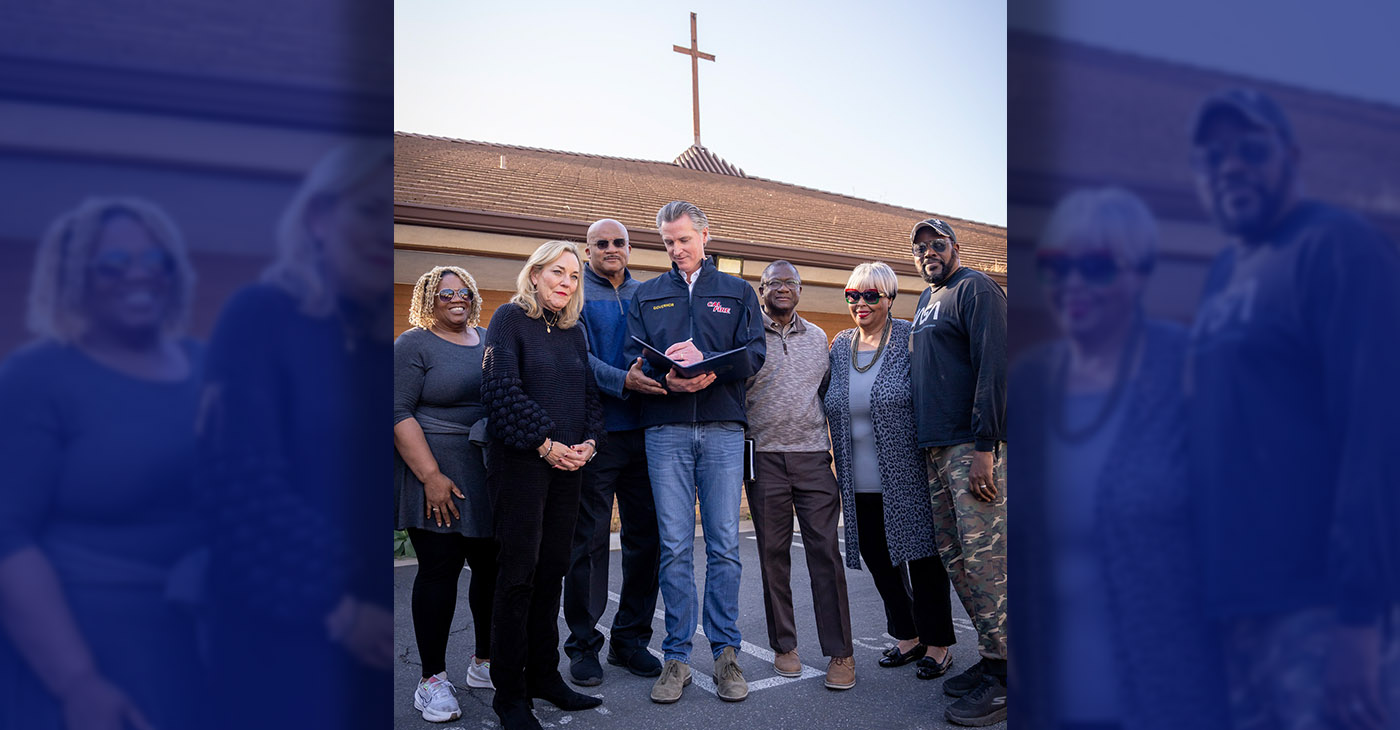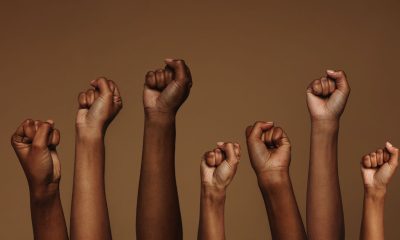Community
State Secures Settlement Agreement with City of Vallejo, Police on Reforms and Accountability
California Attorney General Rob Bonta announced on April 11 that the California Department of Justice (DOJ) has secured a settlement agreement with the City of Vallejo and the Vallejo Police Department (VPD) requiring reforms to VPD’s policies and practices. The agreement announced addresses DOJ’s allegations that the VPD engaged in a pattern or practice of unconstitutional conduct and ensures that the reform process agreed to by the parties in the stipulated judgment will begin immediately, overseen and enforced by DOJ.

Special to The Post
California Attorney General Rob Bonta announced on April 11 that the California Department of Justice (DOJ) has secured a settlement agreement with the City of Vallejo and the Vallejo Police Department (VPD) requiring reforms to VPD’s policies and practices.
The agreement announced addresses DOJ’s allegations that the VPD engaged in a pattern or practice of unconstitutional conduct and ensures that the reform process agreed to by the parties in the stipulated judgment will begin immediately, overseen and enforced by DOJ.
As part of the settlement agreement, the city of Vallejo and VPD will undertake a comprehensive set of actions — to be led by an established independent evaluator, Jensen Hughes, and overseen directly by DOJ — to promote public safety, reduce unlawful uses of force, eliminate racial and identity disparities, strengthen accountability systems, continue to increase support for officers, and protect the statutory and constitutional rights of the people of Vallejo.
“It’s past time the people of Vallejo have a police department that listens and guarantees that their civil rights are protected,” Bonta said. “My office is committed to protecting the rights of the people of Vallejo by overseeing and enforcing the agreement and working collaboratively with VPD and the city and ensuring a fair, thorough, and transparent process.”
On June 5, 2020, DOJ, the city of Vallejo, and VPD entered into a MOU for VPD to institute a comprehensive modernized policing plan that included implementing 45 reform recommendations.
DOJ’s decision to enter into an MOU with VPD to reform its policing came in light of several high-profile uses of force, including a number of officer-involved shootings.
When the MOU expired on June 5, 2023, VPD had achieved substantial compliance with 20 out of the 45 agreed-upon recommendations, but the DOJ concluded that VPD failed to uniformly and adequately enforce the law, based in part, because of defective or inadequate policies, practices, and procedures.
Under the terms of the settlement, VPD and the City of Vallejo are required to implement the remaining reforms, and to implement additional reforms addressing civilian complaints, bias-free policing, stops, searches, seizures and arrest, and ongoing oversight of these reforms.
In October 2023, the parties agreed on a comprehensive five-year plan to address the numerous areas that need improvement and modernization to bring VPD into alignment with contemporary best practices and ensure constitutional policing.
Under the settlement, VPD will implement the remaining recommendations that have not been completed from the 45 recommendations contained in the May 2020 report, including to:
- Address unreasonable force by holding officers and supervisors accountable for not identifying, adequately investigating, or addressing force that is unreasonable or otherwise contrary to VPD policy; and refer uses of force that may violate law or VPD’s use of force policy to their Professional Standards Division (internal affairs) for further investigation or review.
- Enhance, promote, and strengthen partnerships within the community, to continue engaging constructively with the community to ensure collaborative problem-solving and bias-free policing, and to increase transparency and community confidence in VPD.
- Utilize its Chief’s Advisory Board (CAB) and the Police Oversight and Accountability Commission (POAC), to continue to develop and amend significant policies that impact the community, including to its use of force policies, community-policing strategy and policies, bias-free policing policies, and civilian complaint policies.
- Develop a policy that defines and limits the use of pretextual stops.
- Enhance and revise training with respect to investigatory stops, reiterating that race, color, ethnicity, national origin, religion, gender, gender identity, disability, or sexual orientation are not to be used as a factor in establishing reasonable suspicion or probable cause, except as part of actual and credible descriptions of a specific suspect.
- Prohibit officers from conducting consent searches during consensual encounters. Officers may not conduct a consent search after detaining a subject unless an officer reasonably suspects that the subject has contraband or evidence related to that detention, and the consent must be documented on body camera footage or a signed consent form.
- Ensure stops, searches, and seizures comply with the law, as part of an effective overall crime prevention strategy that does not contribute to counterproductive tension with the community.
- Commit to providing bias-free services and enforcing laws in a way that is professional, nondiscriminatory, fair, and equitable.
- Work with the independent Evaluator Jensen Hughes and DOJ to develop a policy and protocol for responding to calls involving a person in mental health crisis or suffering from a mental health disability. The policy and protocol will include utilizing professional civilian staff, who are trained professionals in responding to mental health crises, to respond when appropriate and available.
- Develop and implement policies, guidelines, and training to ensure all supervisors and managers:
- Exercise appropriate supervisory oversight.
- Conduct objective and impartial investigations.
- Are held accountable for meeting agency standards and expectations.
- Engage with and listen to community feedback.
- Incorporate community feedback when able and appropriate.
- Develop and evaluate policing strategies and tactics reflective of contemporary best community policing practices.
- Conduct an ongoing audit of incidents where an officer points a firearm at a member of the public or brandishes a firearm in the presence of a member of the public to ensure that its officers are not drawing a firearm solely based on the mere existence of a potential risk (e.g., public contact, pedestrian/traffic stop).
Activism
Gov. Newsom Approves $170 Million to Fast Track Wildfire Resilience
AB 100 approves major investments in regional conservancies across the state, including over $30 million each for the Sierra Nevada, Santa Monica Mountains, State Coastal, and San Gabriel/Lower LA Rivers and Mountains conservancies. An additional $10 million will support wildfire response and resilience efforts.

By Bo Tefu
California Black Media
With wildfire season approaching, last week Gov. Gavin Newsom signed Assembly Bill (AB) 100, unlocking $170 million to fast-track wildfire prevention and forest management projects — many of which directly protect communities of color, who are often hardest hit by climate-driven disasters.
“With this latest round of funding, we’re continuing to increase the speed and size of forest and vegetation management essential to protecting communities,” said Newsom when he announced the funding on April 14.
“We are leaving no stone unturned — including cutting red tape — in our mission to ensure our neighborhoods are protected from destructive wildfires,” he said.
AB 100 approves major investments in regional conservancies across the state, including over $30 million each for the Sierra Nevada, Santa Monica Mountains, State Coastal, and San Gabriel/Lower LA Rivers and Mountains conservancies. An additional $10 million will support wildfire response and resilience efforts.
Newsom also signed an executive order suspending certain regulations to allow urgent work to move forward faster.
This funding builds on California’s broader Wildfire and Forest Resilience Action Plan, a $2.7 billion effort to reduce fuel loads, increase prescribed burning, and harden communities. The state has also launched new dashboards to keep the public informed and hold agencies accountable.
California has also committed to continue investing $200 million annually through 2028 to expand this effort, ensuring long-term resilience, particularly in vulnerable communities.
Activism
California Rideshare Drivers and Supporters Step Up Push to Unionize
Today in California, over 600,000 rideshare drivers want the ability to form or join unions for the sole purpose of collective bargaining or other mutual aid and protection. It’s a right, and recently at the State Capitol, a large number of people, including some rideshare drivers and others working in the gig economy, reaffirmed that they want to exercise it.

By Antonio Ray Harvey
California Black Media
On July 5, 1935, President Franklin D. Roosevelt signed into federal law the National Labor Relations Act (NLRA). Also known as the “Wagner Act,” the law paved the way for employees to have “the right to self-organization, to form, join, or assist labor organizations,” and “to bargain collectively through representatives of their own choosing, according to the legislation’s language.
Today in California, over 600,000 rideshare drivers want the ability to form or join unions for the sole purpose of collective bargaining or other mutual aid and protection. It’s a right, and recently at the State Capitol, a large number of people, including some rideshare drivers and others working in the gig economy, reaffirmed that they want to exercise it.
On April 8, the rideshare drivers held a rally with lawmakers to garner support for Assembly Bill (AB) 1340, the “Transportation Network Company Drivers (TNC) Labor Relations Act.”
Authored by Assemblymembers Buffy Wicks (D-Oakland) and Marc Berman (D-Menlo Park), AB 1340 would allow drivers to create a union and negotiate contracts with industry leaders like Uber and Lyft.
“All work has dignity, and every worker deserves a voice — especially in these uncertain times,” Wicks said at the rally. “AB 1340 empowers drivers with the choice to join a union and negotiate for better wages, benefits, and protections. When workers stand together, they are one of the most powerful forces for justice in California.”
Wicks and Berman were joined by three members of the California Legislative Black Caucus (CLBC): Assemblymembers Tina McKinnor (D-Inglewood), Sade Elhawary (D-Los Angeles), and Isaac Bryan (D-Ladera Heights).
Yvonne Wheeler, president of the Los Angeles County Federation of Labor; April Verrett, President of Service Employees International Union (SEIU); Tia Orr, Executive Director of SEIU; and a host of others participated in the demonstration on the grounds of the state capitol.
“This is not a gig. This is your life. This is your job,” Bryan said at the rally. “When we organize and fight for our collective needs, it pulls from the people who have so much that they don’t know what to do with it and puts it in the hands of people who are struggling every single day.”
Existing law, the “Protect App-Based Drivers and Services Act,” created by Proposition (Prop) 22, a ballot initiative, categorizes app-based drivers for companies such as Uber and Lyft as independent contractors.
Prop 22 was approved by voters in the November 2020 statewide general election. Since then, Prop 22 has been in court facing challenges from groups trying to overturn it.
However, last July, Prop 22 was upheld by the California Supreme Court last July.
In a 2024, statement after the ruling, Lyft stated that 80% of the rideshare drivers they surveyed acknowledged that Prop 22 “was good for them” and “median hourly earnings of drivers on the Lyft platform in California were 22% higher in 2023 than in 2019.”
Wicks and Berman crafted AB 1340 to circumvent Prop 22.
“With AB 1340, we are putting power in the hands of hundreds of thousands of workers to raise the bar in their industry and create a model for an equitable and innovative partnership in the tech sector,” Berman said.
Activism
California Holds the Line on DEI as Trump Administration Threatens School Funding
The conflict began on Feb. 14, when Craig Trainor, acting assistant secretary for civil rights at the U.S. Department of Education (DOE), issued a “Dear Colleague” letter warning that DEI-related programs in public schools could violate federal civil rights law. The letter, which cited Title VI of the Civil Rights Act and the 2023 Supreme Court ruling in Students for Fair Admissions v. Harvard, which ended race-conscious admissions, ordered schools to eliminate race-based considerations in areas such as admissions, scholarships, hiring, discipline, and student programming.

By Joe W. Bowers Jr
California Black Media
California education leaders are pushing back against the Trump administration’s directive to dismantle diversity, equity, and inclusion (DEI) programs in its K-12 public schools — despite threats to take away billions in federal funding.
The conflict began on Feb. 14, when Craig Trainor, acting assistant secretary for civil rights at the U.S. Department of Education (DOE), issued a “Dear Colleague” letter warning that DEI-related programs in public schools could violate federal civil rights law. The letter, which cited Title VI of the Civil Rights Act and the 2023 Supreme Court ruling in Students for Fair Admissions v. Harvard, which ended race-conscious admissions, ordered schools to eliminate race-based considerations in areas such as admissions, scholarships, hiring, discipline, and student programming.
According to Trainor, “DEI programs discriminate against one group of Americans to favor another.”
On April 3, the DOE escalated the pressure, sending a follow-up letter to states demanding that every local educational agency (LEA) certify — within 10 business days — that they were not using federal funds to support “illegal DEI.” The certification requirement, tied to continued federal aid, raised the stakes for California, which receives more than $16 billion annually in federal education funding.
So far, California has refused to comply with the DOE order.
“There is nothing in state or federal law that outlaws the broad concepts of ‘diversity,’ ‘equity,’ or ‘inclusion,’” wrote David Schapira, California’s Chief Deputy Superintendent of Public Instruction, in an April 4 letter to superintendents and charter school administrators. Schapira noted that all of California’s more than 1,000 traditional public school districts submit Title VI compliance assurances annually and are subject to regular oversight by the state and the federal government.
In a formal response to the DOE on April 11, the California Department of Education, the State Board of Education, and State Superintendent of Public Instruction Tony Thurmond collectively rejected the certification demand, calling it vague, legally unsupported, and procedurally improper.
“California and its nearly 2,000 LEAs (including traditional public schools and charter schools) have already provided the requisite guarantee that its programs and services are, and will be, in compliance with Title VI and its implementing regulation,” the letter says.
Thurmond added in a statement, “Today, California affirmed existing and continued compliance with federal laws while we stay the course to move the needle for all students. As our responses to the United States Department of Education state and as the plain text of state and federal laws affirm, there is nothing unlawful about broad core values such as diversity, equity and inclusion. I am proud of our students, educators and school communities who continue to focus on teaching and learning, despite federal actions intended to distract and disrupt.”
California officials say that the federal government cannot change existing civil rights enforcement standards without going through formal rule-making procedures, which require public notice and comment.
Other states are taking a similar approach. In a letter to the DOE, Daniel Morton-Bentley, deputy commissioner and counsel for the New York State Education Department, wrote, “We understand that the current administration seeks to censor anything it deems ‘diversity, equity & inclusion.’ But there are no federal or State laws prohibiting the principles of DEI.”
-

 Activism4 weeks ago
Activism4 weeks agoOakland Post Endorses Barbara Lee
-

 Activism3 weeks ago
Activism3 weeks agoOakland Post: Week of April 2 – 8, 2025
-

 #NNPA BlackPress3 weeks ago
#NNPA BlackPress3 weeks agoTrump Profits, Black America Pays the Price
-

 Activism2 weeks ago
Activism2 weeks agoOakland Post: Week of April 9 – 15, 2025
-

 #NNPA BlackPress3 weeks ago
#NNPA BlackPress3 weeks agoHarriet Tubman Scrubbed; DEI Dismantled
-

 #NNPA BlackPress3 weeks ago
#NNPA BlackPress3 weeks agoTrump Targets a Slavery Removal from the National Museum of African-American History and Culture
-

 #NNPA BlackPress3 weeks ago
#NNPA BlackPress3 weeks agoLawmakers Greenlight Reparations Study for Descendants of Enslaved Marylanders
-

 #NNPA BlackPress3 weeks ago
#NNPA BlackPress3 weeks agoNew York Stands Firm Against Trump Administration’s Order to Abandon Diversity in Schools

























































